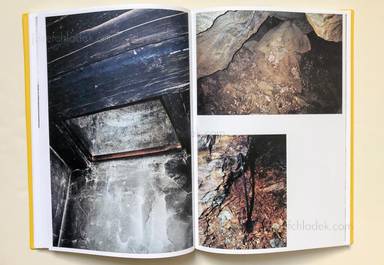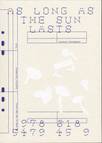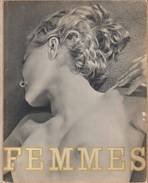Simon Brugner - The Arsenic Eaters, The Eriskay Connection, 2018, Breda

Simon Brugner - The Arsenic Eaters (Front)

Simon Brugner - The Arsenic Eaters (Spine)

Simon Brugner - The Arsenic Eaters (Back)

Sample page 1 for book "Simon Brugner – The Arsenic Eaters", josefchladek.com

Sample page 2 for book "Simon Brugner – The Arsenic Eaters", josefchladek.com

Sample page 3 for book "Simon Brugner – The Arsenic Eaters", josefchladek.com

Sample page 4 for book "Simon Brugner – The Arsenic Eaters", josefchladek.com

Sample page 5 for book "Simon Brugner – The Arsenic Eaters", josefchladek.com

Sample page 6 for book "Simon Brugner – The Arsenic Eaters", josefchladek.com

Sample page 7 for book "Simon Brugner – The Arsenic Eaters", josefchladek.com

Sample page 8 for book "Simon Brugner – The Arsenic Eaters", josefchladek.com

Sample page 9 for book "Simon Brugner – The Arsenic Eaters", josefchladek.com

Sample page 10 for book "Simon Brugner – The Arsenic Eaters", josefchladek.com

Sample page 11 for book "Simon Brugner – The Arsenic Eaters", josefchladek.com

Sample page 12 for book "Simon Brugner – The Arsenic Eaters", josefchladek.com

Sample page 13 for book "Simon Brugner – The Arsenic Eaters", josefchladek.com

Sample page 14 for book "Simon Brugner – The Arsenic Eaters", josefchladek.com

Sample page 15 for book "Simon Brugner – The Arsenic Eaters", josefchladek.com

Sample page 16 for book "Simon Brugner – The Arsenic Eaters", josefchladek.com
Other books tagged Austrian (see all)









Other books tagged Rural (see all)









Other books by The Eriskay Connection (see all)






Books to shop at anzenbergergallery-bookshop.com
Otabind paperback in transparent yellow vinyl sleeve, edition of 1250 copies. Text by Simon Brugner, text editing by Scott Clifford Evans, design by Rob van Hoesel, lithography Colour & Books (Sebastiaan Hanekroot).
The Arsenic Eaters investigates the widespread historical belief that the consumption of arsenic, generally known to be a deadly poison, is beneficial to one’s health. Accordingly, many ‘poison eaters’ were found among the Austrian rural population in the nineteenth century. What they were ingesting was white (arsenic trioxide) or yellow arsenic (arsenic trisulfide). It was produced by roasting arsenic-containing minerals.
Arsenic eaters were robust persons, and usually of the lower class of society, wood cutters, charcoal burners, stablemen, foresters, etc. They ingested arsenic to be 'strong and healthy': to look rosy, to resist fatigue or to strengthen their physique: "See how strong and fresh I am, and what an advantage I have over you all! In times of epidemic fever or cholera, what a fright you are in, while I feel sure of never taking infection."
Though being a popular custom among hard working people like stablemen, wood cutters, and foresters, arsenic eaters were very anxious to conceal the fact, particularly from medical men and priests. It was also believed that once a person became an arsenic eater, he can never stop the habit. To do so would bring rapid decline in health, leading inevitably to death.
The book consists of two parts. The first, contemporary part, traces the poison eaters and tries to find a link between the past and the present. It sketches a possible reality in which the obscure habit of arsenic eating is conceivable. The second part presents Brugner’s research, mainly based on medical papers from the nineteenth, early twentieth century and on-location findings. The book features contemporary photographs as well as archival material.
Order at Eriskay Connection.
Pages: 128
Place: Breda
Year: 2018
Publisher: The Eriskay Connection
Size: 21 x 30 cm (approx.)




















